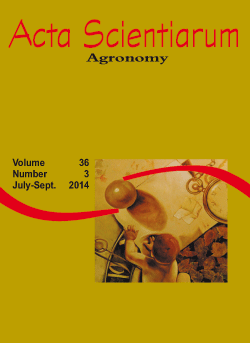<b>Use of microsatellite markers to assess the identity and genetic diversity of <i>Vitis labrusca</i> and <i>Vitis rotundifolia</i> cultivars
Resumo
Ten grapevine cultivars were genotyped at eight microsatellite loci to characterize their identity and genetic diversity. Of these, nine cultivar profiles matched with those of databases and ‘Magoon’ matched with ‘Regale’ in the present study and ‘Regale’ in the University of California (Davis) database, implicating a likely error in planting. The number of alleles ranged from 5 (VVM5) to 9 (VVMD31), and the observed heterozygosity ranged from 37.14 (VVMD5) to 97.14% (VVMD27), with no significant differences in relation to the expected values for any of the loci, with the exception of VVMD5. The polymorphism information content values were observed to be above 0.25 in more than 85% of the loci analyzed, and VVMD31 was the most informative. The UPGMA analysis clustered the cultivars into two distinct groups. Within each group, the most divergent cultivars were ‘Bountiful’ (V. rotundifolia) and ‘Goethe’ (V. labrusca), also exhibiting the largest number of private alleles, 4 and 7, respectively. When comparing the two groups, the most divergent accessions were ‘Bountiful’ and ‘Bordo’, with the highest Nei distance. It was demonstrated that there is sufficient genetic variability in the cultivars used in this study to support breeding programs.
Downloads
DECLARAÇÃO DE ORIGINALIDADE E DIREITOS AUTORAIS
Declaro que o presente artigo é original, não tendo sido submetido à publicação em qualquer outro periódico nacional ou internacional, quer seja em parte ou em sua totalidade.
Os direitos autorais pertencem exclusivamente aos autores. Os direitos de licenciamento utilizados pelo periódico é a licença Creative Commons Attribution 4.0 (CC BY 4.0): são permitidos o compartilhamento (cópia e distribuição do material em qualqer meio ou formato) e adaptação (remix, transformação e criação de material a partir do conteúdo assim licenciado para quaisquer fins, inclusive comerciais.
Recomenda-se a leitura desse link para maiores informações sobre o tema: fornecimento de créditos e referências de forma correta, entre outros detalhes cruciais para uso adequado do material licenciado.




















































